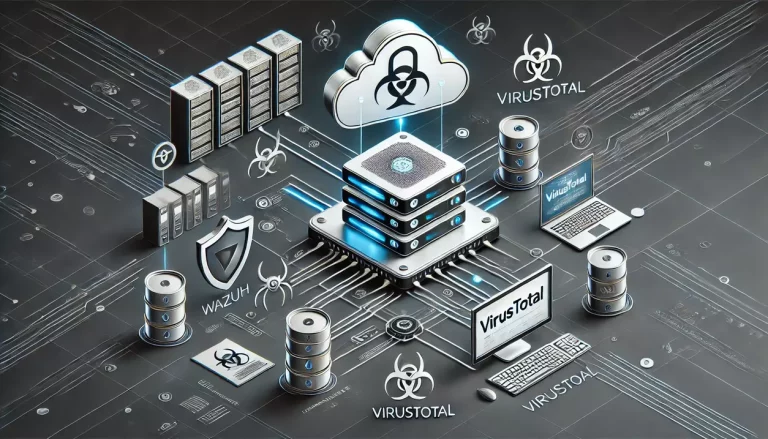Cybersecurity threats are more sophisticated and pervasive than ever before. For organizations and individuals alike, the ability to anticipate, identify, and mitigate risks is critical to safeguarding sensitive information and ensuring operational continuity.
That’s where cybersecurity risk assessments come in. Performing a risk assessment isn’t just a compliance checkbox—it’s a strategic process that helps businesses manage their vulnerabilities and reduce the impact of potential security breaches.
In this blog post, I will guide you through the fundamental steps of performing a cybersecurity risk assessment, providing practical tips and examples to help you implement these steps in your organization. By the end, you’ll have a clear roadmap for evaluating and managing cybersecurity risks.
Why Cybersecurity Risk Assessments Matter
Before diving into the steps, let’s briefly touch on why risk assessments are critical. Whether you run a small business or are part of a large enterprise, cyber risk assessments help you:
- Identify vulnerabilities in your systems and processes.
- Understand the potential impact of those vulnerabilities if exploited.
- Prioritize your cybersecurity efforts based on actual risk levels.
- Comply with regulatory requirements (such as GDPR, HIPAA, etc.).
- Mitigate costly breaches, which could result in data loss, downtime, and reputational damage.
Step 1: Define the Scope and Objectives
The first step in any risk assessment is to clearly define the scope. This involves determining which systems, applications, or processes will be assessed. Depending on the size and complexity of your organization, you may choose to perform a company-wide assessment or focus on specific areas, such as:
- A particular IT infrastructure (e.g., a cloud environment or on-premises network).
- Critical business applications (such as finance systems).
- Specific departments (like HR or legal that handle sensitive data).
Practical Tip: Start with your most critical assets. These are systems or processes that, if compromised, would have a significant impact on your business operations. For example, if you run an e-commerce website, your payment processing system might be the highest priority.
Example:
If your organization is heavily reliant on a cloud service provider (e.g., AWS, Azure), your scope may include assessing the cloud infrastructure, the applications hosted there, and the data storage practices.
Step 2: Identify Potential Threats and Vulnerabilities
Once the scope is defined, the next step is to identify what threats and vulnerabilities could affect your assets. A threat could be anything that may exploit a vulnerability, such as:
- Cybercriminals attempting to gain unauthorized access to sensitive data.
- Insider threats, where employees misuse their access privileges.
- Natural disasters or system failures that lead to data loss.
Meanwhile, a vulnerability refers to a weakness in your system, software, or internal processes that could be exploited by a threat. Common examples include outdated software, weak passwords, or poorly configured firewalls.
Example:
Imagine your organization uses a legacy CRM system that has not been patched in years. This could be a vulnerability that a hacker could exploit through known software exploits.
Practical Tip: Utilize threat intelligence sources (like vulnerability databases, industry reports, or cybersecurity news) to stay updated on the latest threats relevant to your industry.
Step 3: Assess Risk Levels
Not all risks are created equal. Once you’ve identified potential threats and vulnerabilities, the next step is to assess the likelihood of these risks occurring and the impact they would have on your organization if they were to materialize. This is often done using a simple risk matrix:
| Impact | Low Probability | Medium Probability | High Probability |
|---|---|---|---|
| Low Impact | Low Risk | Low Risk | Medium Risk |
| Medium Impact | Low Risk | Medium Risk | High Risk |
| High Impact | Medium Risk | High Risk | Critical Risk |
For each identified threat, you can categorize it based on the combination of likelihood and impact.
Example:
Let’s say one of your threats is a phishing attack. If employees have not been trained on identifying phishing emails, the likelihood of falling victim is high. If successful, the impact could result in sensitive data loss, making this a high risk.
Practical Tip: When assessing impact, consider both tangible (e.g., financial loss, legal penalties) and intangible effects (e.g., reputational damage, loss of customer trust).
Step 4: Prioritize Risks
After identifying and assessing risks, it’s important to prioritize them based on their severity. Not all risks can be addressed at once, so you’ll need to focus on mitigating those that pose the greatest threat to your organization.
You can use a risk ranking system (such as high, medium, or low) to organize risks into manageable categories. High-priority risks should be addressed immediately, while lower-priority risks may be handled over time.
Example:
- High Priority: A critical vulnerability in a web application that handles customer credit card information.
- Medium Priority: Unpatched software on an internal server that does not connect to the internet.
- Low Priority: Outdated antivirus software on a non-critical machine.
Practical Tip: Communicate your risk priorities with stakeholders across the organization, including senior leadership. This helps to ensure that everyone understands which areas need immediate attention and why.
Step 5: Develop Mitigation Strategies
For each prioritized risk, develop a mitigation strategy that outlines how you will reduce the likelihood or impact of the risk. This might involve:
- Implementing technical controls (e.g., firewalls, encryption, multifactor authentication).
- Creating or updating policies (e.g., incident response plans, employee training programs).
- Outsourcing to security experts or investing in managed security services.
Example:
If the risk is related to weak employee password policies, your mitigation strategy could involve rolling out a password management tool and implementing multi-factor authentication.
Practical Tip: Consider both short-term and long-term mitigation strategies. Short-term fixes might patch immediate vulnerabilities, while long-term strategies (such as improving overall security hygiene) help sustain your organization’s defenses.
Step 6: Monitor and Review Regularly
Cybersecurity risk assessments are not a one-time event. The threat landscape is constantly evolving, and new vulnerabilities are discovered daily. It’s crucial to continuously monitor your environment and review your risk assessment periodically to ensure that your strategies remain effective.
- Schedule regular assessments, at least annually, or after major changes in your environment (e.g., new software deployments, mergers).
- Monitor for new threats using security tools like intrusion detection systems (IDS) and threat intelligence feeds.
- Update your risk assessment to reflect any changes in risk levels, such as new vulnerabilities discovered in your software.
Example:
After implementing a mitigation strategy for phishing attacks, continue to monitor how often phishing emails are bypassing your filters. If phishing incidents persist, you may need to upgrade your email security tools.
Practical Tip: Integrating automated security monitoring tools (such as SIEM—Security Information and Event Management systems) helps to detect and respond to threats in real time.
Conclusion: Risk Assessment as a Key to Cyber Resilience
Performing a cybersecurity risk assessment is a critical step in protecting your organization from cyber threats. By identifying vulnerabilities, evaluating risks, and developing mitigation strategies, you can significantly reduce the likelihood and impact of cyberattacks.
As threats continue to evolve, maintaining an ongoing risk assessment process ensures that your security efforts remain relevant and effective.
By following this practical guide, you not only comply with regulatory standards but also build a resilient cybersecurity posture that can withstand the challenges of an increasingly dangerous digital landscape.
Key Takeaways:
- Define the scope of your assessment based on critical assets.
- Identify threats and vulnerabilities specific to your organization.
- Assess and prioritize risks based on their likelihood and impact.
- Develop and implement practical mitigation strategies.
- Continuously monitor and update your risk assessments to stay ahead of emerging threats.
This approach to risk assessment will help you make informed decisions, prioritize security resources effectively, and enhance your overall cybersecurity resilience.





